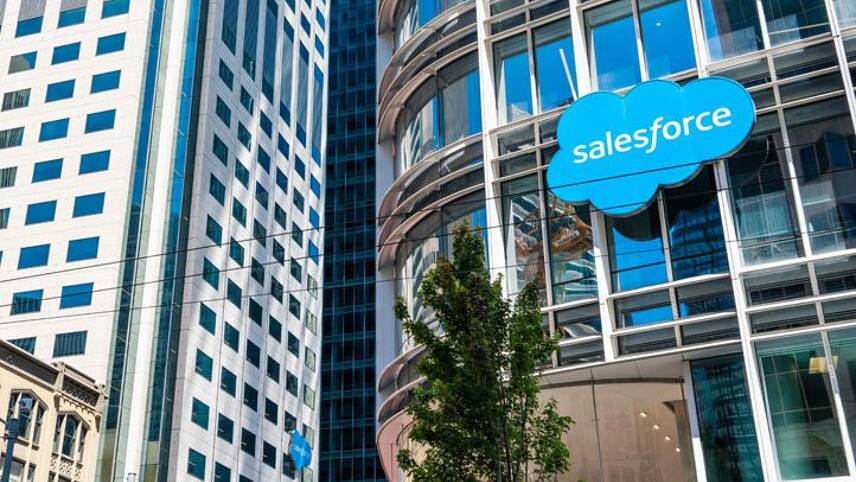This premium content is exclusive to edie Members.
To find out more about edie Membership, please click below.
If you are an existing member, login here

Image: Salesforce
At a glance
Who: Salesforce
What: Purchasing renewable certificates from developing nations
Where: Brazil, Africa, Malaysia
Why: To support access to clean energy and cooking
When: February 2023
The challenge
Almost 800 million people are unable to access electricity at present, and the figure stands at 2.6 billion for those who cannot access clean cooking fuels. As companies strive ahead to switch to clean energy, more needs to be done to enable a Just Transition that supports impoverished parts of society.
The solution
Salesforce has announced plans to support various small-scale distributed clean energy initiatives such as solar microgrids for isolated and rural communities in developing countries, while maintaining the company’s commitment to 100% renewable energy.
How it works
Projects will be coordinated by Powertrust, a renewables aggregator, using Distributed Renewable Energy Certificates (D-RECs), a financial mechanism that enables organisations to deploy capital for small-scale, distributed clean energy initiatives.
A Distributed Renewable Energy Certificate (D-REC) represents one kilowatt-hour (kWh) of electricity that has been generated from distributed renewable energy sources. It allows companies to sell the renewable energy attributes that originated from small installations, such as Solar Home Systems or mini-grids.
The funding will support projects for the next eight years and help maintain Salesforce’s commitment to match 100% of the electricity the company uses with renewable energy.
Potential projects within this portfolio include: replacing diesel generators in Brazil with a solar-powered microgrid for a remote community along the Amazon River, delivering a solar-powered microgrid in Nagaland, an eastern state in India for an isolated mountain community, a solar and storage installation for a hospital in Sub-Saharan Africa and a new microgrid in the Borneo region of Malaysia, which is home to 72% of rural Malaysians who lack access to electricity.
These projects will be located in schools, hospitals, public service facilities, or in disadvantaged communities
The results
Salesforce purchases will help unlock an estimated $65m of investments in new solar capacity and is expected to avoid more than 50,000 tonnes of CO2 emissions annually.
In 2021, Salesforce achieved 100% renewable energy, purchasing enough renewable energy to match all electricity it uses globally – equivalent to around 746 GWh.
The industry context
The International Energy Agency (IEA) previously assessed investment and policy ‘gaps’, which will need to be closed if the world is to deliver on the IEA’s vision for net-zero by 2050.
The Agency warned that annual investments in both clean and fossil-based energies have fallen by one-fifth for developing nations and emerging economies since 2016, on average. Between 2016 and 2020, these nations accounted for just one-fifth of global energy investment.
To align with the IEA’s net-zero vision, renewable energy investment in developing nations must increase sevenfold.
The company
Salesforce announced it had become a net-zero business across its value chain back in 2021 by following a three-step, iterative process: avoid, reduce, offset.
The company has developed 1.5C-aligned targets, approved by the Science Based Targets initiative (SBTi). These entail halving Scope 1 (direct) and 2 (power-related) emissions by 2030, against a 2018 baseline; halving Scope 3 (indirect) emissions from fuel and energy activities within the same timescale and supporting suppliers representing 60% of Scope 3 emissions to set their own targets in line with climate science by 2024.
As of 2021, Salesforce has offset 85,000 MTCO2e of its remaining Scope 1 and 2 emissions, as well as all of its 185,000 MTCO2e Scope 3 Carbon Neutral Cloud-Related emissions.
The company reiterates that it is currently spending to match is annual electricity use – purchasing an equivalent amount of renewables on an annual basis, but purchasing renewables doesn’t necessarily mean a complete emissions reduction for electricity use. Read more on Salesforce’s approach to renewables here.
© Faversham House Ltd 2024 edie news articles may be copied or forwarded for individual use only. No other reproduction or distribution is permitted without prior written consent.

